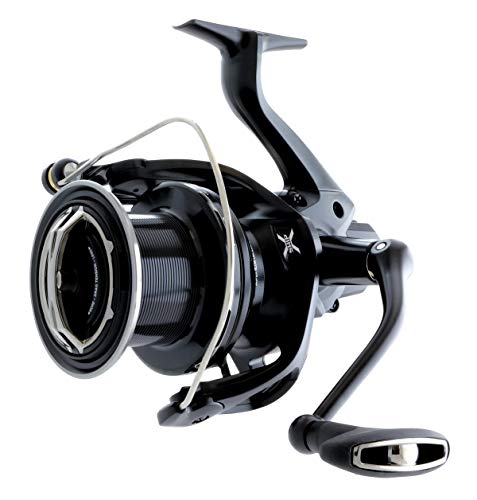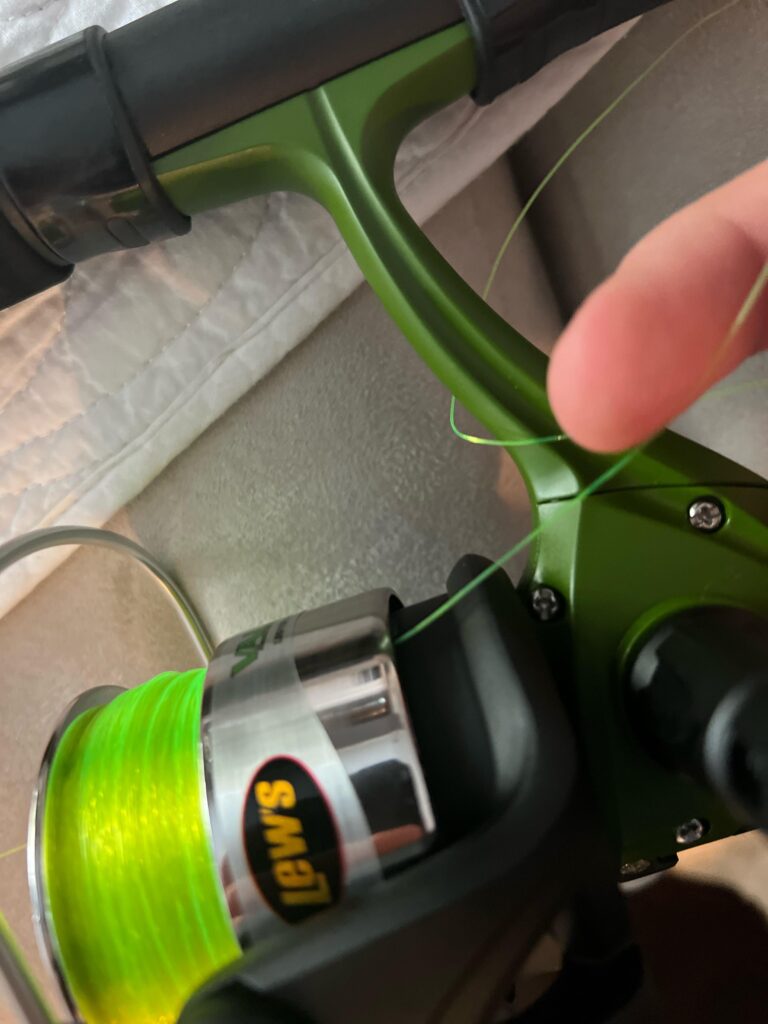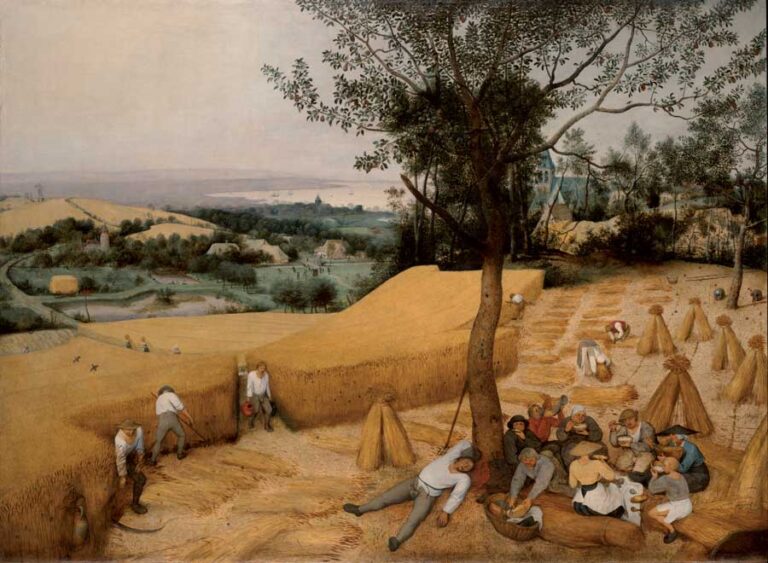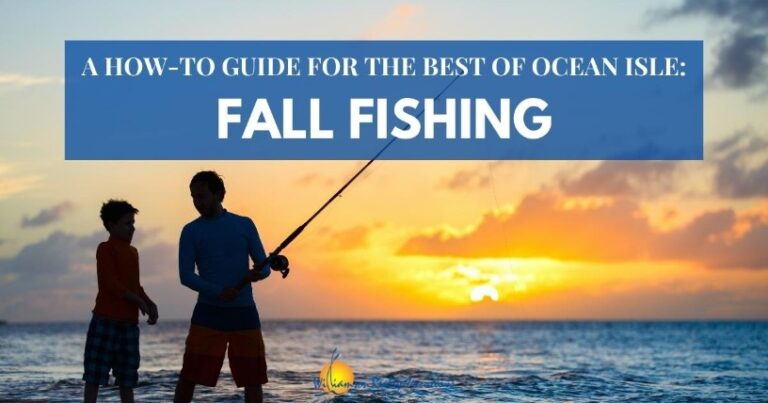The best time to go bass fishing is during the early morning and late afternoon/evening hours. During these times, bass are more active and feeding, providing better chances of catching them.
Bass are known to be more sluggish during the middle of the day when the sun is high, making it harder to entice them to bite. Bass fishing enthusiasts often find success by targeting bass in low-light conditions when the water temperature is cooler.
This is because bass tend to move into shallower areas to feed during these times. Additionally, weather factors such as cloud cover and slight wind can also play a role in increasing bass activity. Understanding these key factors can greatly enhance an angler’s chances of success when bass fishing. Happy fishing!

Credit: gomexus.com
Why Seasonality Matters In Bass Fishing
Understanding The Impact Of Seasons On Bass Behavior
Bass fishing is a popular sport for many anglers, but did you know that the time of year can greatly impact the behavior of bass? Understanding how seasons affect bass can make a huge difference in your fishing success. Here are the key points to keep in mind:
- Spring: During the spring months, bass transition from their slow winter metabolism to an active feeding phase. As the water temperature warms up, bass become more aggressive and start moving closer to the shore. They are actively seeking out prey to replenish their energy after a long winter. This is a great time to catch bass as they are more likely to bite on a variety of lures and baits.
- Summer: Summer is the time when bass are most active and can be found both in shallow and deep waters. As the temperature rises, bass tend to go deeper in search of cooler water and follow schools of baitfish. During this time, it’s best to fish early in the morning or late in the evening when the water is cooler. Topwater lures, jigs, and deep-diving crankbaits are often successful in enticing bass bites.
- Fall: Fall is a transition period for bass as they begin to prepare for the colder winter months. Bass will start to move back to shallower waters in search of food before the water temperature drops. Fall can be a great time for topwater fishing as bass are more aggressive and chasing after baitfish. Spinnerbaits, crankbaits, and soft plastics are also effective lures during this season.
- Winter: Winter is the most challenging season for bass fishing as they become less active and slow down their metabolism. Bass tend to move to deeper waters and become less responsive to lures. However, experienced anglers can still find success by using slow and subtle presentations such as jigs, drop shot rigs, and live bait. Fishing near structure or areas with natural cover can also increase your chances of catching bass during the winter.
How Seasonal Changes Affect Bass Feeding Patterns
Bass feeding patterns are closely tied to seasonal changes, and understanding these patterns can greatly increase your chances of a successful fishing trip. Here are the key points to consider:
- Water temperature: Bass are cold-blooded creatures, and their metabolism is greatly influenced by water temperature. As the water temperature changes throughout the seasons, bass adjust their feeding patterns accordingly. Warmer water temperatures in spring and summer trigger increased activity and feeding, while colder water temperatures in fall and winter slow down their metabolism.
- Baitfish migration: The movement of baitfish is another important factor in bass feeding patterns. Baitfish such as shad and minnows serve as a primary food source for bass, and bass will follow their migration patterns. Understanding where the baitfish are moving can help you locate schools of bass.
- Spawning season: The spawning season for bass varies depending on the region, but generally occurs in the spring. During this time, bass become more focused on reproduction rather than feeding. However, it’s worth noting that bass may still strike on lures to protect their nests. It’s important to practice catch and release during spawning season to ensure the future population of bass.
- Weather conditions: Weather conditions such as rain, wind, and barometric pressure can also affect bass feeding patterns. Rain can wash nutrients into the water, stimulating baitfish activity and attracting bass. Wind can create a ripple effect on the surface, providing cover for bass to ambush their prey. Changes in barometric pressure can also influence bass behavior, with many anglers finding success before a storm front moves in.
The Importance Of Adapting Fishing Techniques To The Optimal Season
Adapting your fishing techniques to the optimal season is crucial for maximizing your chances of catching bass. Here are the key points to remember:
- Use the right lures: Different seasons call for different types of lures. In the spring, when bass are more aggressive, try using spinnerbaits, crankbaits, and soft plastics. In the summer, when bass are deeper, consider using jigs, deep-diving crankbaits, and carolina rigs. In the fall, topwater lures, spinnerbaits, and jerkbaits can be effective. In the winter, slow and subtle presentations like jigs and drop shot rigs work best.
- Adjust your fishing locations: Bass move to different areas depending on the season, so it’s important to adapt your fishing locations accordingly. In the spring, focus on shallower waters near shorelines and structures. In the summer, target deeper waters and look for drop-offs and ledges. In the fall, concentrate on areas with baitfish activity, such as points and creek mouths. In the winter, search for deeper areas with structure or cover.
- Pay attention to water temperature: Water temperature plays a vital role in bass behavior, so keep a close eye on it. Use a quality fish finder to monitor the water temperature and locate areas where bass are likely to be. In spring and fall, bass tend to prefer slightly warmer water, while in summer and winter they may move to deeper waters where the temperature is more stable.
- Be patient and experiment: Bass fishing is a game of patience and experimentation. Don’t be afraid to try different techniques, lures, and fishing spots until you find what works best for the current season. Pay attention to the feedback you receive from the bass and be willing to adapt your approach accordingly.
By understanding the impact of seasons on bass behavior, the changes in their feeding patterns, and the importance of adapting your fishing techniques, you can greatly improve your chances of a successful bass fishing trip. Remember to always follow fishing regulations and practice responsible catch and release to preserve the bass population for future generations of anglers.
Spring: Prime Time For Bass Fishing
The Significance Of Spawning Season For Bass Fishing
- Spring is considered prime time for bass fishing due to the significance of the spawning season.
- During the spring, bass fish are more active and aggressive as they prepare to spawn.
- Spawning is the process where female bass lay eggs and male bass fertilize them.
- Understanding the behavior and patterns during the spawning season can greatly enhance your chances of catching bass.
- By targeting the areas where bass spawn, you can increase your chances of hooking a big one.
- The spawning season typically begins when water temperatures reach around 60 to 65 degrees fahrenheit.
- Male bass start scouting and preparing nesting beds in shallow water during this time.
- Female bass join the males when the water temperature is right, and they lay their eggs.
- It’s important to be mindful of catch and release practices during spawning season to ensure the sustainability of the bass population.
Exploring The Best Locations For Spring Bass Fishing
- When it comes to spring bass fishing, location is key. Here are some top spots to consider:
- Lakes and reservoirs: Look for areas with shallow flats near deeper water where bass tend to congregate during spawning season.
- Rivers and creeks: Focus on areas with cover such as fallen trees, weed beds, and submerged vegetation where bass like to hide and ambush their prey.
- Backwaters and coves: These secluded areas offer protection and abundant food sources for bass, making them ideal spawning grounds.
- Points and drop-offs: Bass often use these areas as migration routes during the spring, making them prime spots to find feeding fish.
Effective Lures And Baits To Use During The Spring Season
- Selecting the right lures and baits can make all the difference in spring bass fishing. Here are some effective options:
- Soft plastic worms: Texas-rigged or wacky-rigged worms in natural colors are go-to choices for spring bass. They mimic the forage bass feed on and can be worked effectively near spawning areas.
- Crankbaits: Choose shallow or medium-diving crankbaits in natural or flashy colors. Retrieve them at varying speeds to imitate injured or fleeing baitfish.
- Spinnerbaits: These versatile lures can cover a lot of water quickly and are effective in both clear and murky waters. Choose spinnerbaits with willowleaf or colorado blades, depending on the water conditions.
- Jigs: Pitching or flipping jigs with trailers that resemble crawfish or baitfish can entice bass into biting. Work them slowly around structure and cover.
- Topwater lures: As the water temperature warms up, bass become more active on the surface. Try using buzzbaits, poppers, or frogs to tempt bass into explosive strikes.
Remember, experimenting with different lures, retrieves, and colors is crucial during spring bass fishing. Pay attention to the fish’s behavior and adjust your techniques accordingly to increase your chances of success. So get out there, explore the best locations, and enjoy the thrill of spring bass fishing!
Summer: Navigating The Challenges
How High Water Temperatures Influence Bass Behavior
- Bass are influenced by water temperatures, and during the summer months, when temperatures reach their peak, their behavior can change significantly. It’s important for anglers to understand these changes in order to have a successful bass fishing experience.
- As water temperatures rise, bass tend to become more lethargic and seek cooler, deeper areas of the water. They may also move closer to structures such as submerged rocks, fallen trees, or deeper channels. Understanding these preferences can help anglers target specific areas for bass fishing.
Tips For Locating Bass In Summer Hotspots
- Look for areas with deeper water: As water temperatures rise, bass tend to move to cooler depths. Look for areas with deeper water, such as drop-offs, ledges, or channels, where bass are likely to congregate.
- Pay attention to structure: Bass love to hide and seek shelter around structures like submerged rocks, fallen trees, or aquatic vegetation. These structures provide shade and cooler temperatures, making them attractive hotspots for bass.
- Focus on shaded areas: While bass may prefer deeper waters during the summer, they also seek shade to escape the heat. Look for areas where shade is present, such as overhanging trees, docks, or bridge pilings. These shaded areas can hold hidden gems for bass fishing.
Recommended Techniques And Gear For Successful Summer Bass Fishing
- Use slower presentations: As bass become more lethargic in the summer, it’s important to adjust your fishing techniques accordingly. Slow down your presentations, using techniques like texas rigs, carolina rigs, or jigs. This allows you to present the bait in a more natural and enticing manner.
- Experiment with different bait colors and sizes: In warm water, bass can become more selective in their feeding. Try using different bait colors and sizes to see what works best on a given day. Start with natural colors like green pumpkin or watermelon, but don’t be afraid to experiment with brighter colors to trigger a reaction bite.
- Opt for lighter fishing gear: When bass are in a more sluggish state, using lighter gear can provide a better feel for subtle bites. Opt for a medium to medium-heavy rod paired with a low-profile baitcasting reel. Use a fluorocarbon line for its sensitivity and stealthy presentation.
Remember, fishing during the summer months can come with its own set of challenges, but with the right strategies and techniques, you can still have a rewarding bass fishing experience. Understanding how water temperatures influence bass behavior, locating bass in summer hotspots, and using recommended techniques and gear can greatly improve your chances of success.
So get out there, enjoy the summer, and reel in some big bass!
Fall: Transition Period With Exciting Opportunities
The fall season is an exhilarating time for bass fishing enthusiasts. As the temperatures start to cool down, bass undergo various behavioral changes, presenting anglers with exciting opportunities to reel in some big catches. Understanding the fall turnover and knowing how to locate the key factors for finding fall bass can significantly increase your chances of success on the water.
Additionally, implementing the right techniques during this feeding frenzy can make a world of difference. Let’s dive into these topics and discover how you can make the most of the fall season.
Learning About The Fall Turnover And Its Effect On Bass:
- The fall turnover refers to the process where the layers of water in a lake or reservoir mix, causing changes in oxygen levels, water temperature, and overall habitat.
- During this transition, bass move to different depths in search of stable conditions, which impacts their behavior and feeding patterns.
- Understanding the fall turnover can help you locate bass and adjust your techniques accordingly for a more successful fishing experience.
Identifying The Key Factors For Locating Fall Bass:
- Water temperature: Bass tend to favor water temperatures between 60°f and 70°f. Look for areas where the water is in this range, as it will likely attract feeding bass.
- Structure: Focus on areas with submerged vegetation, fallen trees, rock formations, or points and drop-offs, as these provide hiding spots and ambush points for bass.
- Baitfish presence: Pay attention to the presence of baitfish such as shad or minnows, as bass will often follow their food source.
- Current: Areas with a steady current, such as inflows or outflows, can concentrate baitfish and attract bass looking for an easy meal.
Techniques To Capitalize On The Feeding Frenzy During The Fall Season:
- Topwater lures: As bass feed aggressively in the fall, using topwater lures like buzzbaits, poppers, or walking baits can elicit explosive strikes.
- Crankbaits: Crankbaits are a versatile choice during the fall. Choose shallow or medium-diving crankbaits in natural colors that mimic the local forage.
- Spinnerbaits: With their flash and vibration, spinnerbaits are excellent for covering water and triggering reaction strikes from active bass.
- Jigs: Pitching or flipping jigs into cover can be highly effective during the fall. Use natural-colored jigs with bulky trailers for a realistic presentation.
- Soft plastics: Texas-rigged worms and creature baits can be productive when fishing slow and methodically around structure or along drop-offs.
Remember, the fall season presents a unique set of challenges and opportunities. By understanding the fall turnover, locating key factors for finding bass, and employing the right techniques, you can enhance your bass fishing success during this transition period. So grab your gear, head out on the water, and make the most of the exhilarating fall bass fishing season.
Winter: Bass Fishing In Chilly Waters
Understanding The Winter Slowdown In Bass Activity
The chilly winter months can bring about a slowdown in bass activity, making it a unique time for bass fishing. Understanding the reasons behind this slowdown is crucial in order to adapt your fishing techniques and increase your chances of success.
Here are a few key points to consider:
- Reduced metabolism: Bass, like many other cold-blooded creatures, experience a decrease in their metabolic rate during winter. This means they become less active and require less food to sustain themselves.
- Disrupted feeding patterns: As bass become less active, their feeding patterns also change. They tend to feed less frequently and are more likely to target smaller prey that requires less energy to catch.
- Deep water retreat: During winter, bass tend to move to deeper sections of lakes or reservoirs where the water is warmer and more stable. These areas provide a more comfortable habitat for them during the colder months.
- Slower reaction time: The cold water temperatures cause bass to have slower reaction times, making them less likely to engage in aggressive feeding behaviors. This means that a slower and more patient fishing approach is necessary.
Exploring Strategies For Cold Water Bass Fishing
Winter bass fishing requires some adjustments to your usual fishing strategies. Here are a few effective strategies to increase your chances of success:
- Fish slow and deep: Since bass tend to retreat to deeper waters during winter, it’s important to adapt your fishing technique accordingly. Use slower presentations such as jigs, drop shots, or slow-rolling spinnerbaits to effectively target bass in these deeper areas.
- Focus on structure: Bass seek out structure for shelter and security during winter. Look for areas with submerged vegetation, rocks, fallen trees, or underwater ledges. These structural elements can serve as ideal hiding spots for bass.
- Explore transitional zones: Transitional zones, where deep water meets shallow water, can be prime locations for winter bass. These areas often hold a mix of warmer and cooler water, attracting bass in search of more comfortable conditions.
- Time your fishing outings: Bass tend to be more active during warmer parts of the day in winter. Consider targeting them during the late morning or early afternoon when the sun has had time to warm up the water temperature slightly.
Tips For Choosing The Right Lures And Presentations During Winter
Selecting the appropriate lures and presentations is crucial for enticing bass during the winter months. Here are some effective tips to keep in mind:
- Opt for smaller baits: Since bass target smaller prey during winter, downsizing your lures can increase your chances of getting a bite. Choose smaller-sized soft plastics, jigs, or crankbaits that mimic the size of the bass’ natural winter forage.
- Use natural colors: Stick to natural color schemes when selecting your lures. Browns, greens, and blacks tend to be effective choices as they closely resemble the appearance of natural prey in winter.
- Retrieve with patience: Slow and steady wins the race when it comes to winter bass fishing. Use a slow and deliberate retrieval technique to mimic the sluggish movement of baitfish in cold water.
- Experiment with different depths: Bass may be found at varying depths during winter, so it’s essential to explore different water columns. Start at deeper depths and gradually work your way shallower until you find where the bass are holding.
Remember, winter bass fishing requires patience, adaptability, and a willingness to experiment with different techniques. By understanding the winter slowdown in bass activity and employing suitable strategies and lure choices, you can maximize your chances of catching bass even in the chilly waters.
So bundle up, stay patient, and enjoy the unique challenges and rewards of winter bass fishing!
Conclusion: The Best Time For Bass Fishing Revealed
Bass fishing is a popular activity enjoyed by fishing enthusiasts of all levels. However, finding the best time to go bass fishing can greatly increase your chances of success on the water. Throughout this blog post, we have explored the different seasons and conditions that impact bass behavior.
Now, let’s summarize the key takeaways and reveal the best time for bass fishing.
Recap Of The Optimal Seasons And Their Importance:
- Spring: Springtime is prime bass fishing season. As the water temperature warms up, bass start moving towards the shallows to spawn. This makes them more active and easier to catch.
- Summer: During the summer, bass fishing can be challenging due to the hot weather and increased fishing pressure. However, early mornings and late evenings can still be productive. Look for areas with shade, vegetation, or deeper structures where bass seek refuge from the heat.
- Fall: Fall is another great time to catch bass. As the water starts cooling down, bass become more active, feeding aggressively before winter. They can be found near shorelines, especially around structure and cover.
- Winter: Bass fishing during winter requires more patience and adaptability. As the water temperature drops, bass become lethargic and tend to move to deeper waters. Slowly retrieving lures and targeting deep structures can yield positive results.
Highlighting The Need For Adapting To Changing Conditions:
- Bass behavior can vary depending on factors such as weather, water clarity, and baitfish availability. It is important to stay adaptable and adjust your fishing techniques accordingly.
- Pay attention to the conditions on the day of fishing and make necessary changes to your lure selection, retrieval speed, and fishing location. Being adaptable will increase your chances of success even during less optimal times.
Emphasizing The Significance Of Patience And Persistence In Bass Fishing:
- Bass fishing is not just about casting your line and reeling in the big one. It requires patience and persistence.
- Don’t get discouraged if you’re not getting bites right away. Bass can be selective, and it may take time to figure out what they are biting on. Keep trying different lures and techniques, and eventually, you will be rewarded.
- Remember, even the best anglers have days when the bass just aren’t biting. Persistence is key in becoming a successful bass angler.
So, what is the best time to go bass fishing? While each season offers its advantages and challenges, springtime stands out as the prime time for bass fishing. The warmer water temperatures and spawning activity make bass more active, increasing your chances of catching them.
However, with the right strategies and adaptations, you can still have a successful bass fishing expedition throughout the year. So, grab your fishing gear, be adaptable, and exercise patience and persistence – the bass are waiting to be caught!
Conclusion
To sum it up, determining the best time to go bass fishing can greatly enhance your chances of a successful outing. By considering factors such as water temperature, weather conditions, and the bass’s feeding patterns, you can strategically plan your fishing trips for optimal results.
Early mornings and late afternoons tend to be favorable due to cooler water temperatures and increased bass activity. However, it’s important to remember that every body of water and region is different, so conducting research and seeking local fishing reports can provide valuable insights.
Additionally, being adaptable and open to experimenting with different techniques, lures, and locations can help you continuously improve your bass fishing skills. So, get out there, observe nature, and enjoy the thrill of bass fishing at the perfect time. Happy fishing!






